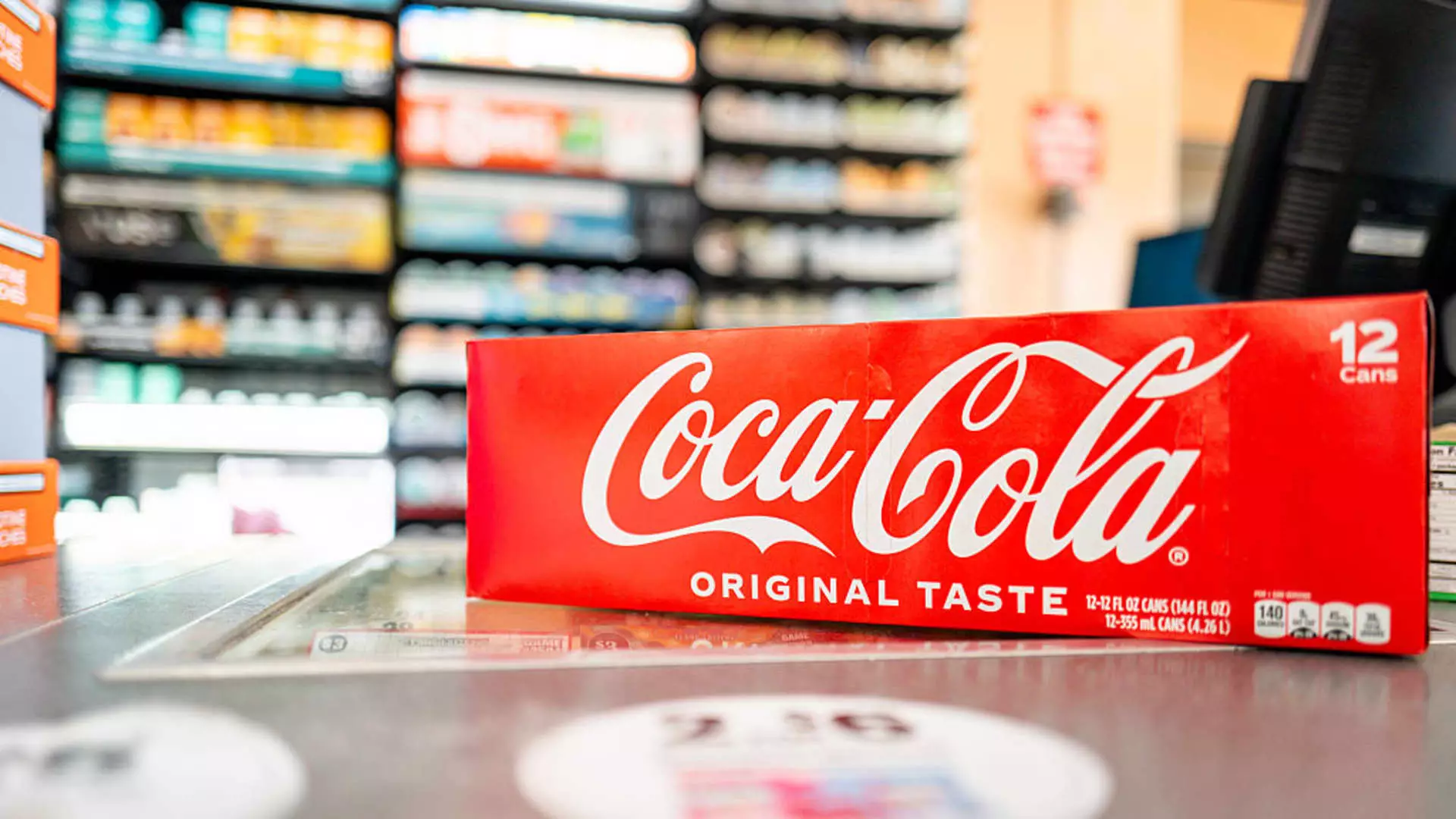Coca-Cola’s recent earnings report presents a paradoxical image: despite surpassing analyst expectations and posting higher-than-anticipated revenue and net income, the deeper undercurrents reveal a fragile foundation. While on paper the company exhibits resilience, a closer examination suggests that underlying issues threaten its stability long-term. The apparent triumph in Europe and a slight uptick in North America are masked by sluggish global volume sales and nuanced market challenges. This discrepancy underscores a troubling reality: Coca-Cola’s apparent success may be more superficial than substantive, built on strategic adjustments rather than genuine consumer demand.
The company’s reported revenue of $12.62 billion, slightly above expectations, signals a temporary rebound. But considering that organic revenue increased only 5%, the core demand growth appears limited at best. The fact that global unit case volume fell by 1% indicates that at the physical consumption level, Coca-Cola is losing ground. The production of more nuanced figures, such as volume declines in Latin America and Asia-Pacific, underscores the persistent struggle to sustain global demand. What’s more troubling is that this decline is happening in a company that, on the surface, looks robust. The supposed strength seems to hinge on tactical pricing and currency adjustments rather than genuine consumer confidence.
Market Disparities and Consumer Underconfidence
One of the most revealing aspects of Coca-Cola’s report is its uneven regional performance. EMEA and certain markets like Europe experienced growth, but these are exceptions rather than the rule. In Latin America and Asia-Pacific, volume drops signal that economic and political uncertainties are chipping away at demand. The fact that these declines occurred during a period when global markets should be recovering hints at deeper vulnerabilities—particularly in regions where economic instability often leads to reduced discretionary spending.
CEO James Quincey’s remarks about improved volumes in some challenged markets mask a more concerning reality: consumer confidence is still fragile. Quincey emphasizes the resilience of the U.S. consumer and efforts to target affordability, but these are band-aid solutions. The social media wave targeting Coke in the U.S. over immigration issues illustrates how external political tensions and misinformation can impact even giant corporations. Such episodes not only threaten immediate sales but also signal an erosion of trust, which can have lasting consequences on consumer loyalty.
Weakness in Core Product Segments
Despite the positive headline figures, the core beverage segments tell a sobering story. The flagship sparkling soft drinks segment, representing the traditional Coke offering, saw volume decline by 1%. Meanwhile, segments like water, sports drinks, and coffee are either flat or declining in volume—highlighting a shifting consumer preference away from sugary sodas to healthier alternatives, or at least toward more diversified beverage options.
The plan to introduce a cane sugar version of Coke in the U.S. might offer a temporary boost, but it signals a reactive strategy rather than a proactive transformation. Relying on product variants tied to nostalgia or regional preferences cannot fundamentally reverse the declining trend in core soda consumption. This suggests the company’s innovation pipeline and adaptation strategies are insufficient to combat evolving consumer tastes and health-conscious trends.
Extended Challenges and Fragile Optimism
Coca-Cola’s wider outlook for 2025 contains a mixture of caution and optimism. Narrowing its earnings growth forecast and emphasizing steady organic revenue increases suggest a recognition that growth will be modest and incremental. The company remains heavily reliant on strategic pricing, currency management, and regional market improvements to sustain its financial health—an inherently unstable position given the macroeconomic volatility.
In truth, Coca-Cola’s projected 5% to 6% organic revenue growth seems optimistic when considering the declining volumes and shifting consumer behaviors. If current trends persist, the company’s traditional model may prove increasingly unsustainable. While leadership remains optimistic about influencing results, the reality is that core demand weaknesses—exacerbated by geopolitical tensions, social issues, and health trends—pose an existential threat that can’t simply be offset by short-term tactical moves.
Coca-Cola’s recent earnings serve as a stark reminder that even industry giants can be vulnerable. Behind the veneer of financial stability lies a complex web of regional disparities, evolving consumer preferences, and external pressures that threaten to undermine long-term profitability. The myth of resilience, particularly in a fragile global economy, can be dangerous if it masks fundamental weaknesses that are unlikely to be remedied by superficial adjustments or optimistic forecasts.

